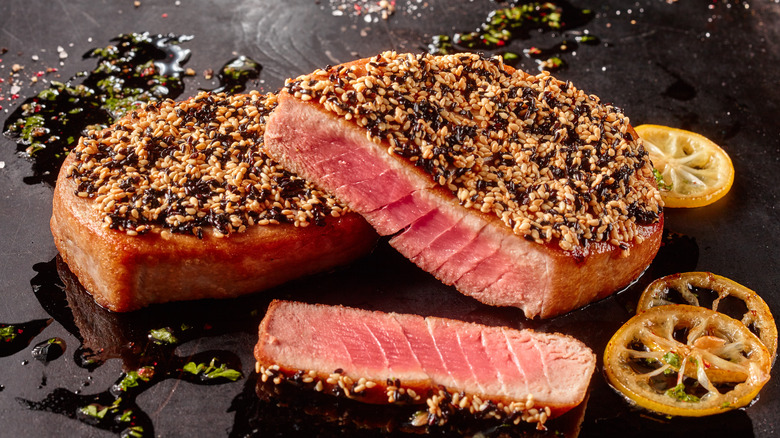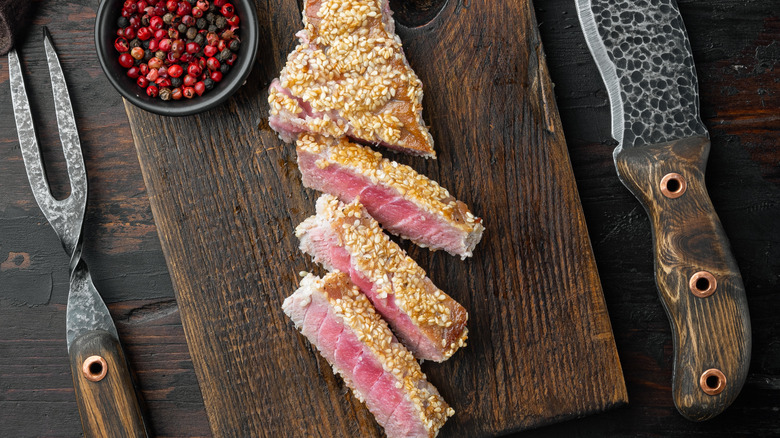Why The Correct Oil Temperature Is So Important For Sesame-Crusted Tuna
With a range of cooking oils to choose from, it is easy to understand how many at-home chefs might feel overwhelmed when preparing meals made with fish and meat. Combining delicate flesh with the temperature fluctuations of ovens, stoves, and flame, and producing a perfectly cooked protein can seem nearly impossible to master. But rest assured, serving up plates of deliciously seared tuna is not far out of reach. You'll just need to know a few techniques before you begin.
First, there's the matter of the seasoning. Rolled in a crunchy blend of sesame seeds and spice, tuna fillets are coated and patted down to be readied for cooking. As Slender Kitchen notes, the best dishes of sesame-crusted tuna are crispy on the outside, yet the flesh is cooked rare. This combination might seem best left up to the professionals, but you too can cook dishes that could be taken out of a high-end restaurant if the temperature of your cooking oil is just right.
The perfect heat
To get that beautifully seared crust on your tuna fillets, your cooking oil needs to be the perfect temperature, instructs MasterClass. If the oil in your skillet or pan starts to smoke, it is too hot and will simply end up burning the coating of sesame seeds before your fish can be properly cooked. When using grapeseed oil, aim to heat oil on medium heat for about three minutes before placing the fish in the pan. Inversely, if the oil isn't heated properly, your tuna steak will most likely end up overcooked before you notice any coloring on the outside of the fish.
If you are emboldened and ready to cook tuna steaks at home, we have a tempting sesame-crusted tuna steak recipe that is easy to follow. Simple to prepare and impressive to serve, you and your guests will feel like you are dining at a Michelin-starred restaurant once this dish is plated and presented. Just make sure the oil is at the right temperature before placing it in the tuna to cook.

